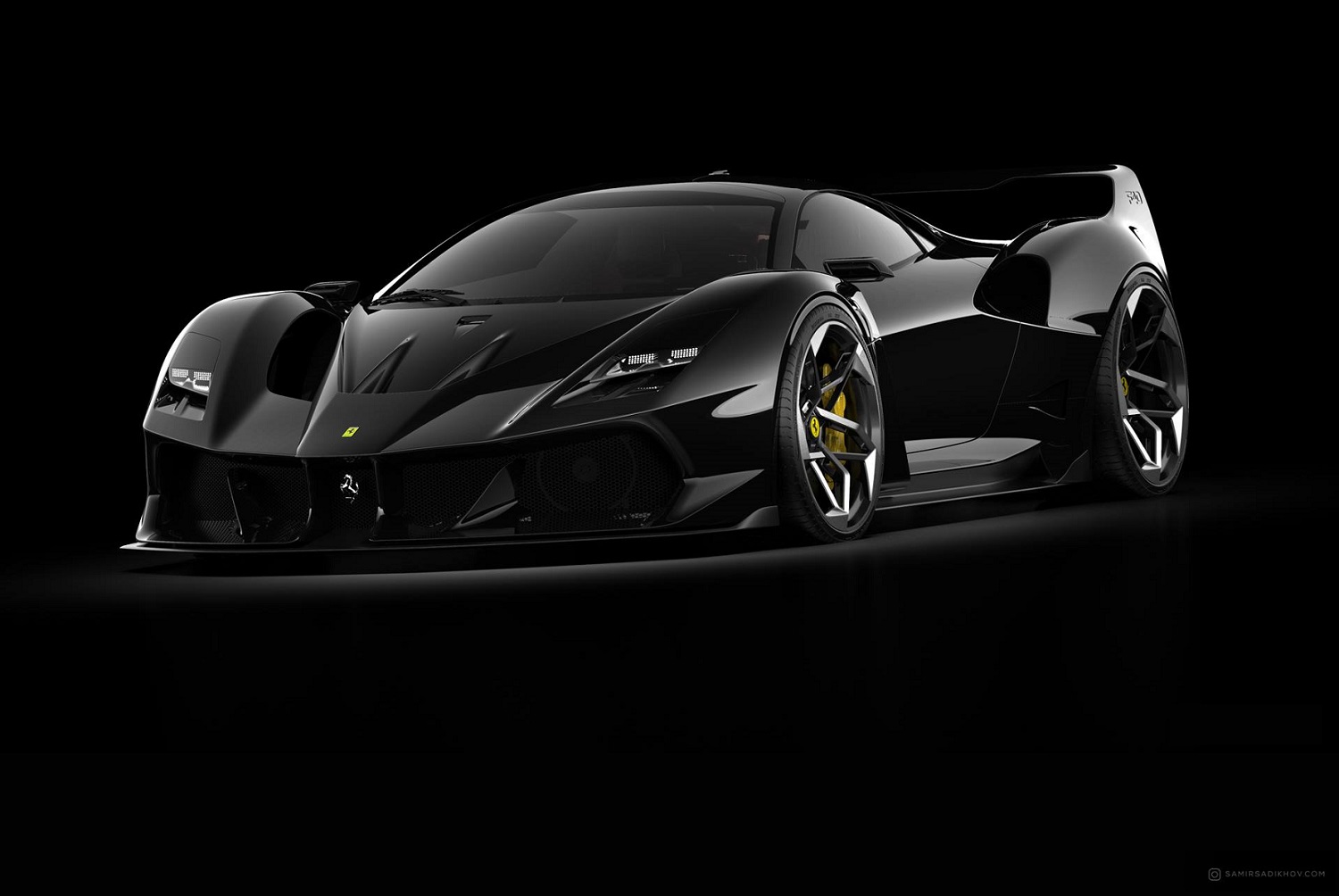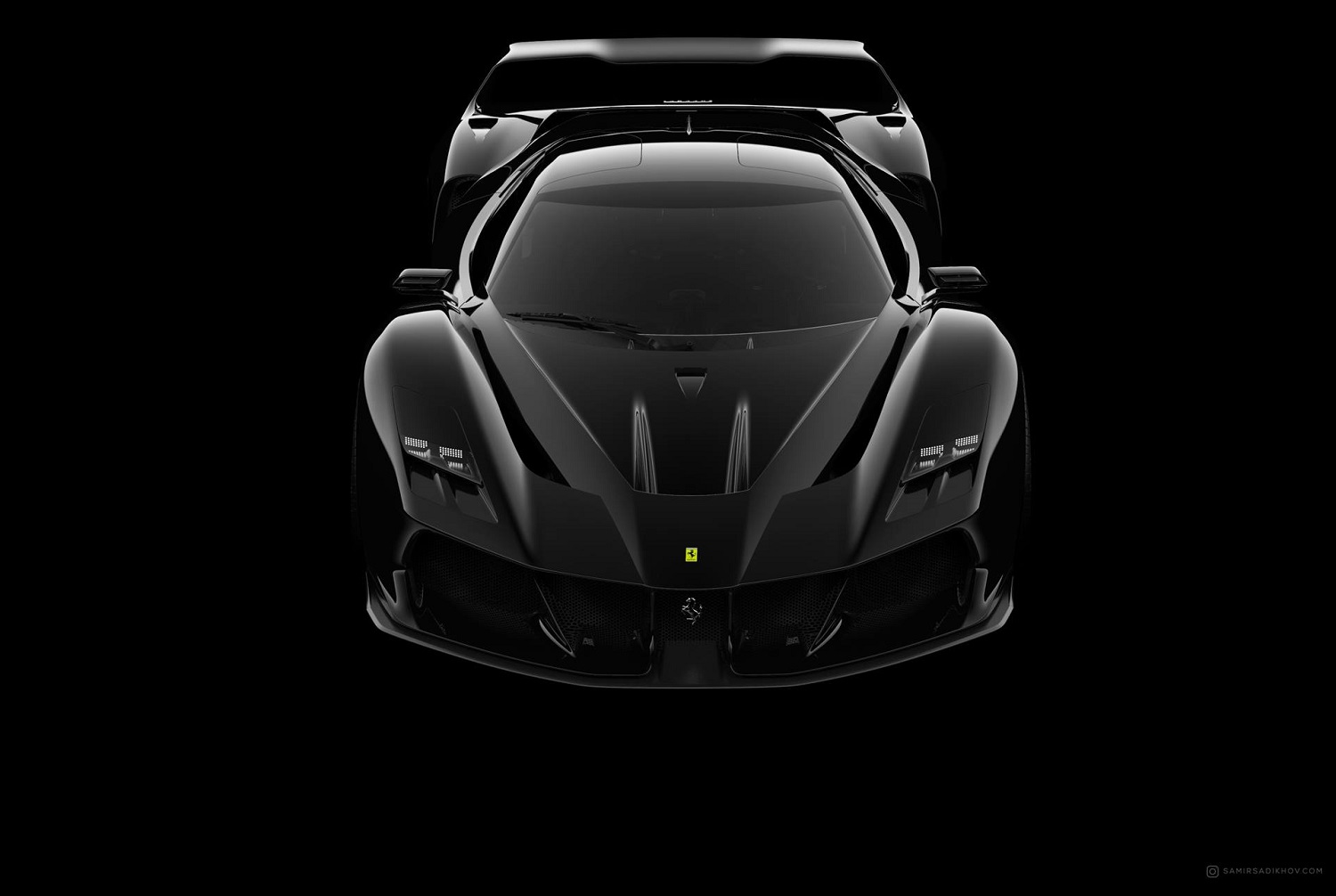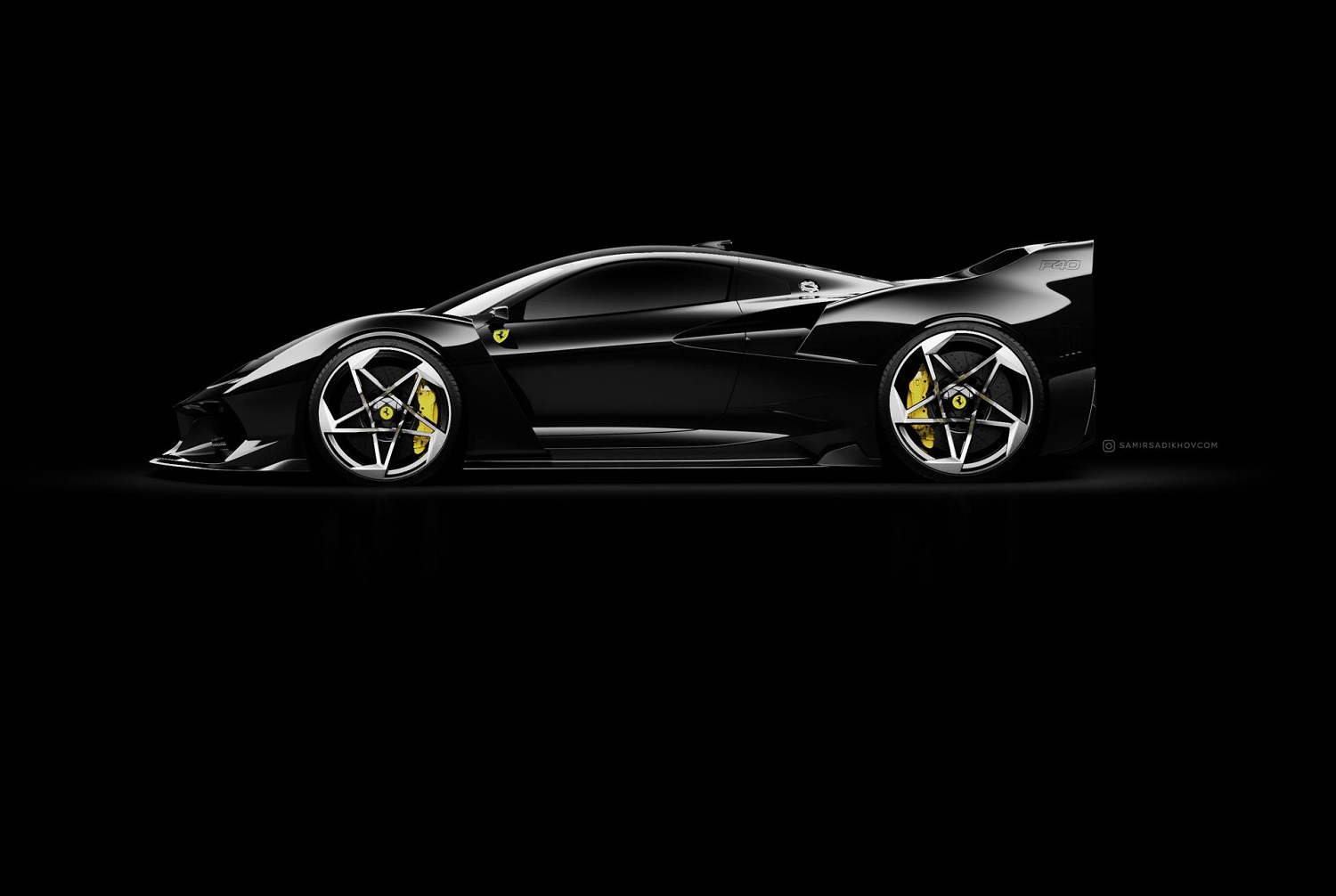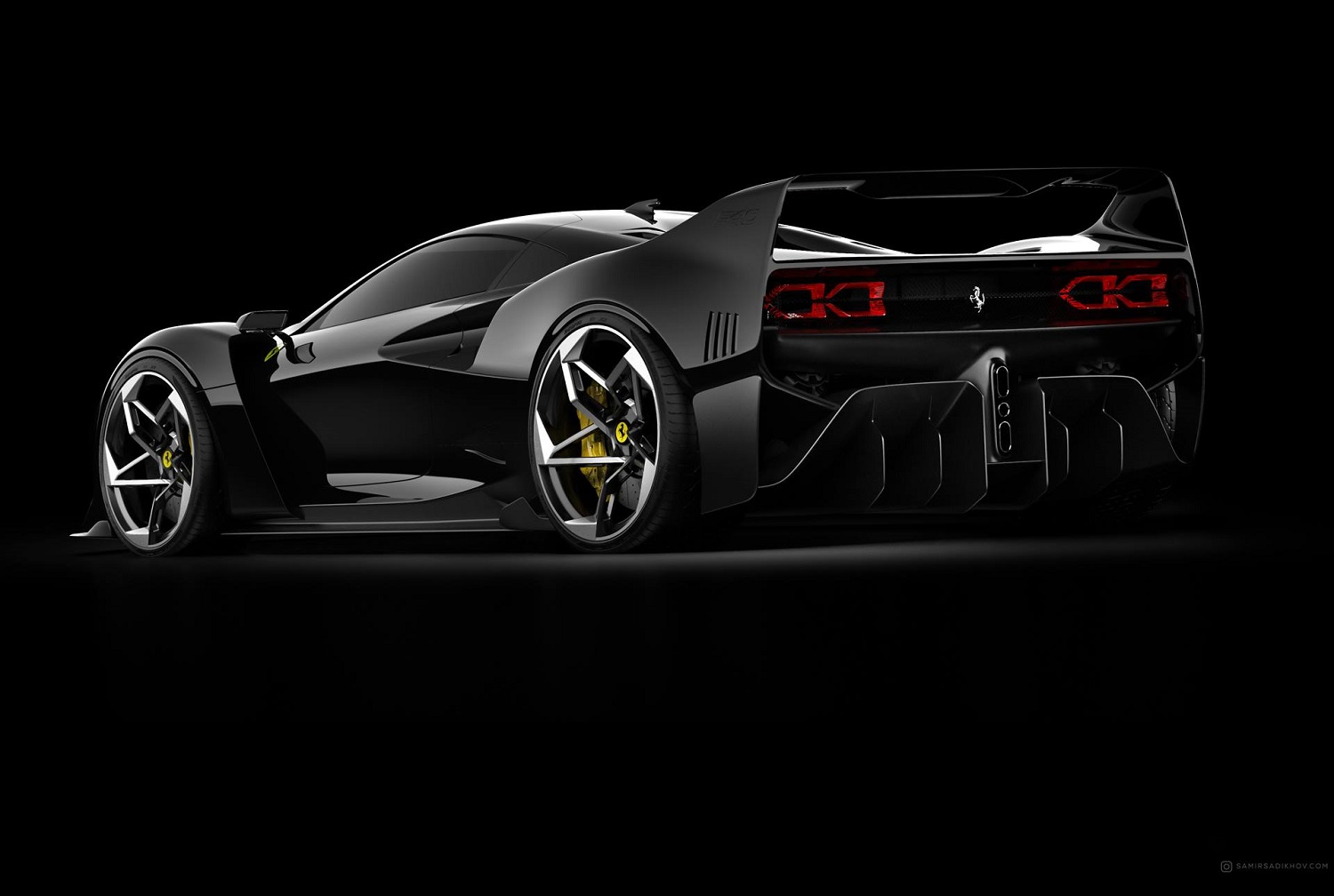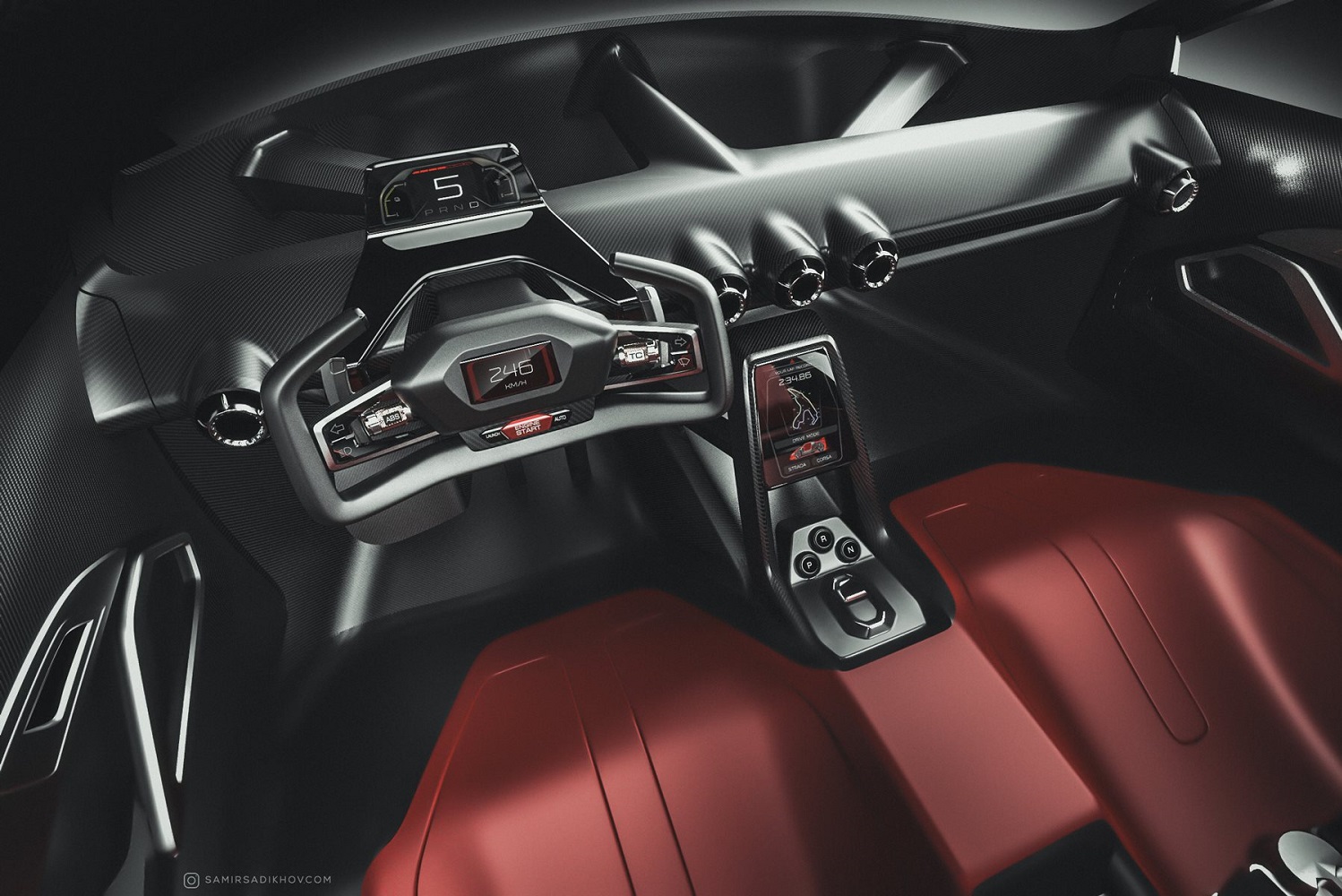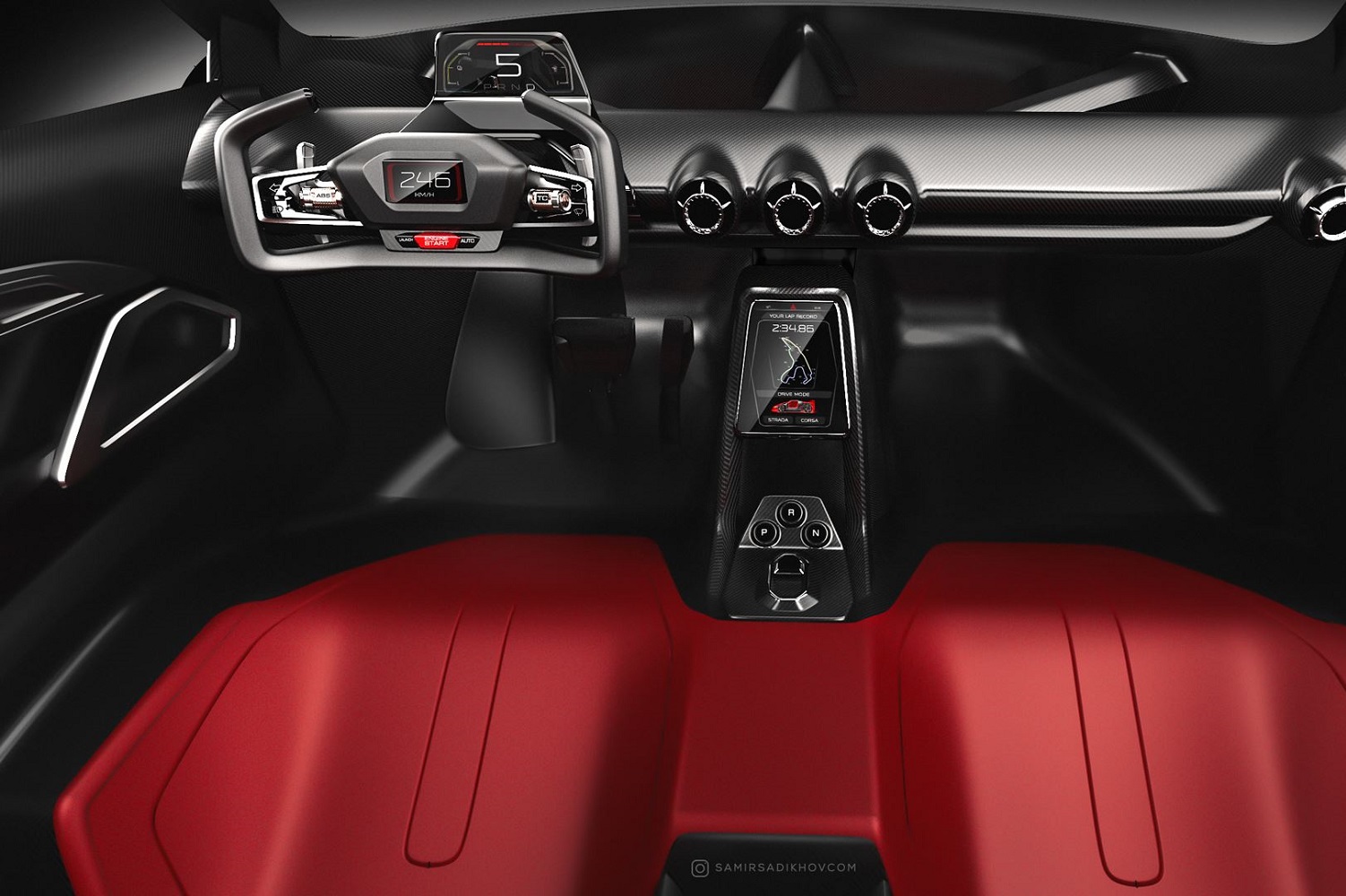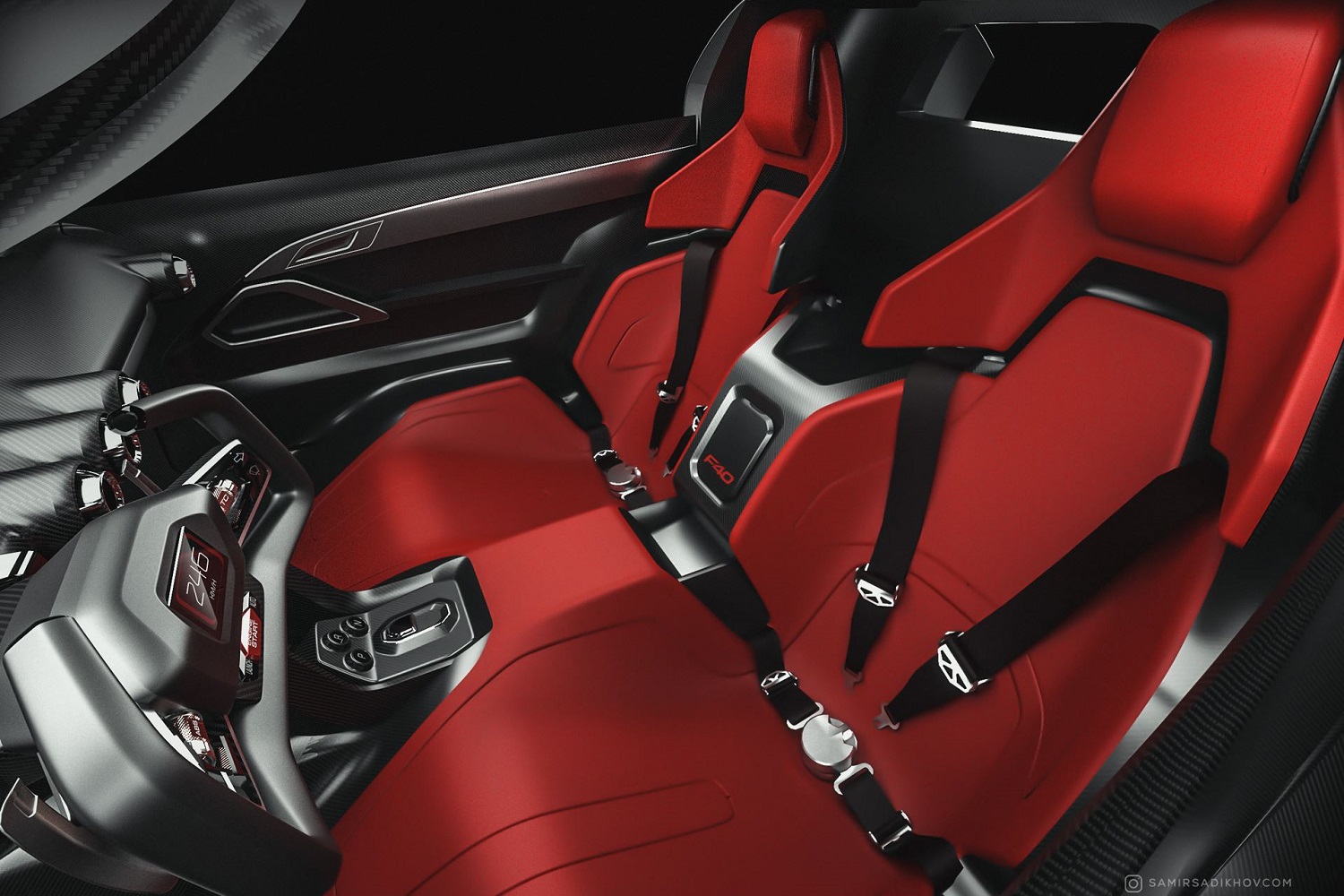F50. Enzo. LaFerrari. Ferrari’s greatest hypercars all trace their roots to the 1987 F40. An unmistakable family resemblance links the four cars but Ferrari has never explored what a 21st-century version of the F40 would look like; it prefers to stay firmly focused on the future. Industrial designer Samir Sadikhov was curious and skilled enough to create a modern interpretation of the F40 imbued with contemporary styling cues.
Sadikhov spent over a year working on the project. The result is a race car-like coupe that borrows key features from the F40 without venturing into pure retro-styled territory. The car’s basic shape is accented by a more sculpted design that incorporates the vents needed for downforce and cooling. Rectangular LED lights and a Formula One-like nose cone characterize the front end, while the rear end receives square lights instead of the original’s round units, plus a sizable diffuser. The huge wing — one of the F40’s defining details — remains but it’s a little bit lower and better integrated into the body.
The designer made bigger changes inside. Set your time time machine to 1987 and you’ll notice the F40 came with a full dashboard, a three-spoke steering wheel, and an array of analog gauges. Sadikhov embedded the F40 Tribute in the 21st century with cutting-edge tech like a rectangular, twin-spoke steering wheel with a built-in screen, a frameless digital instrument cluster, and a small screen for the infotainment system. The renderings are spot-on; we wouldn’t have been surprised to receive them directly from Ferrari.
Due to the virtual nature of the project, there’s no word on what powers it. To add context, the F40 invaded eardrums with a twin-turbocharged, 2.9-liter V8 engine that delivered 471 horsepower at 7,000 rpm and 426 pound-feet of torque at 4,000 rpm in its most basic configuration. The actual output varied from car to car. It’s not difficult to imagine the Tribute using an evolution of the LaFerrari‘s V12-electric hybrid powertrain, a setup rated at 950 horsepower and 664 pound-feet of torque. Hey, we can dream, right?
Sadikhov stressed the F40 Tribute is merely a personal design exercise. It wasn’t designed for (or at the request of) Ferrari and it’s not a preview of an upcoming production model; the LaFerrari’s successor won’t arrive until the early 2020s at the earliest and there’s no indication it will share anything with the F40. Of course, there’s nothing preventing a particularly wealthy enthusiast from commissioning a coachbuilder to make the F40 Tribute a reality. It would instantly earn a spot on the list of Ferrari’s greatest cars.
